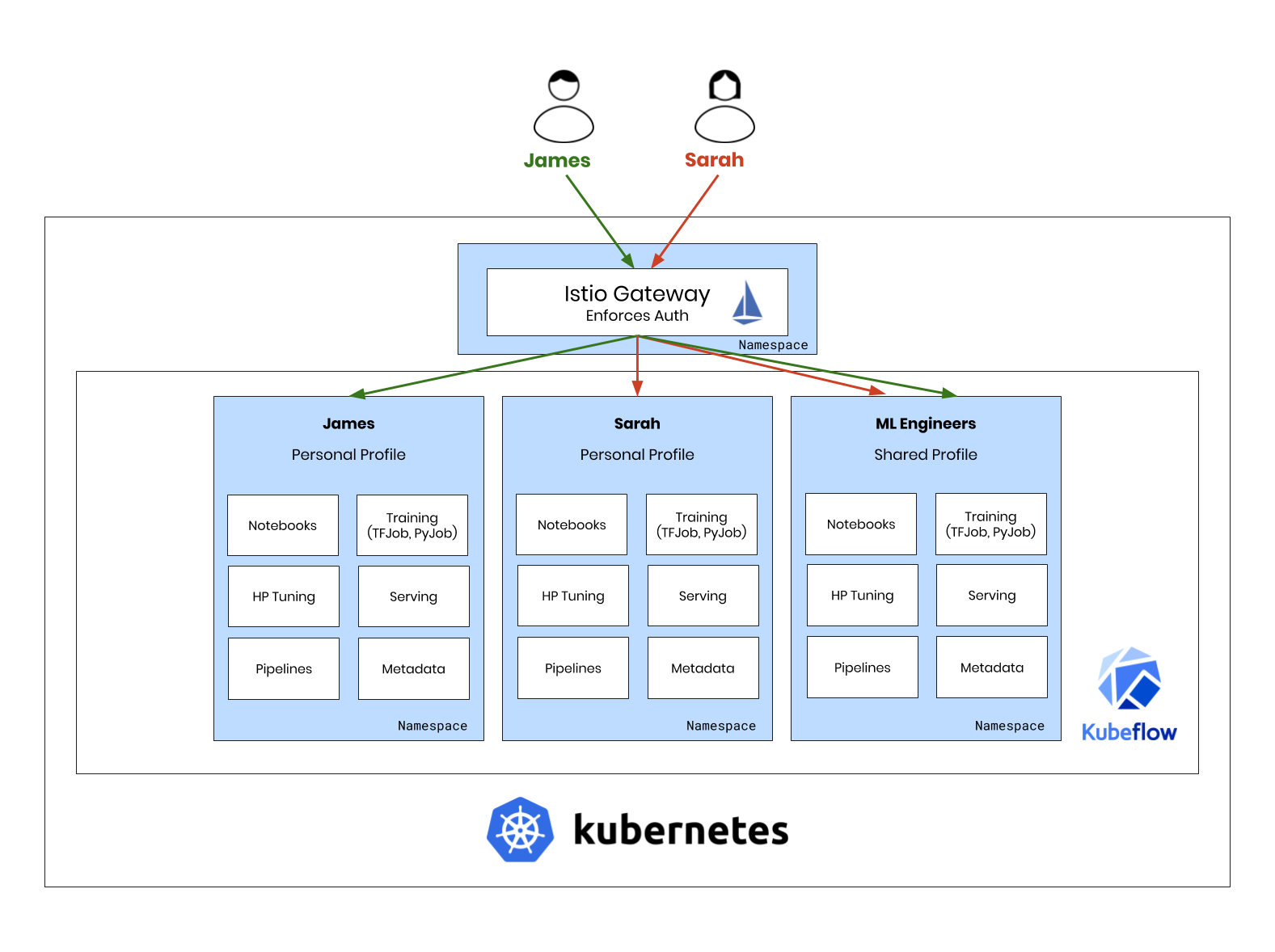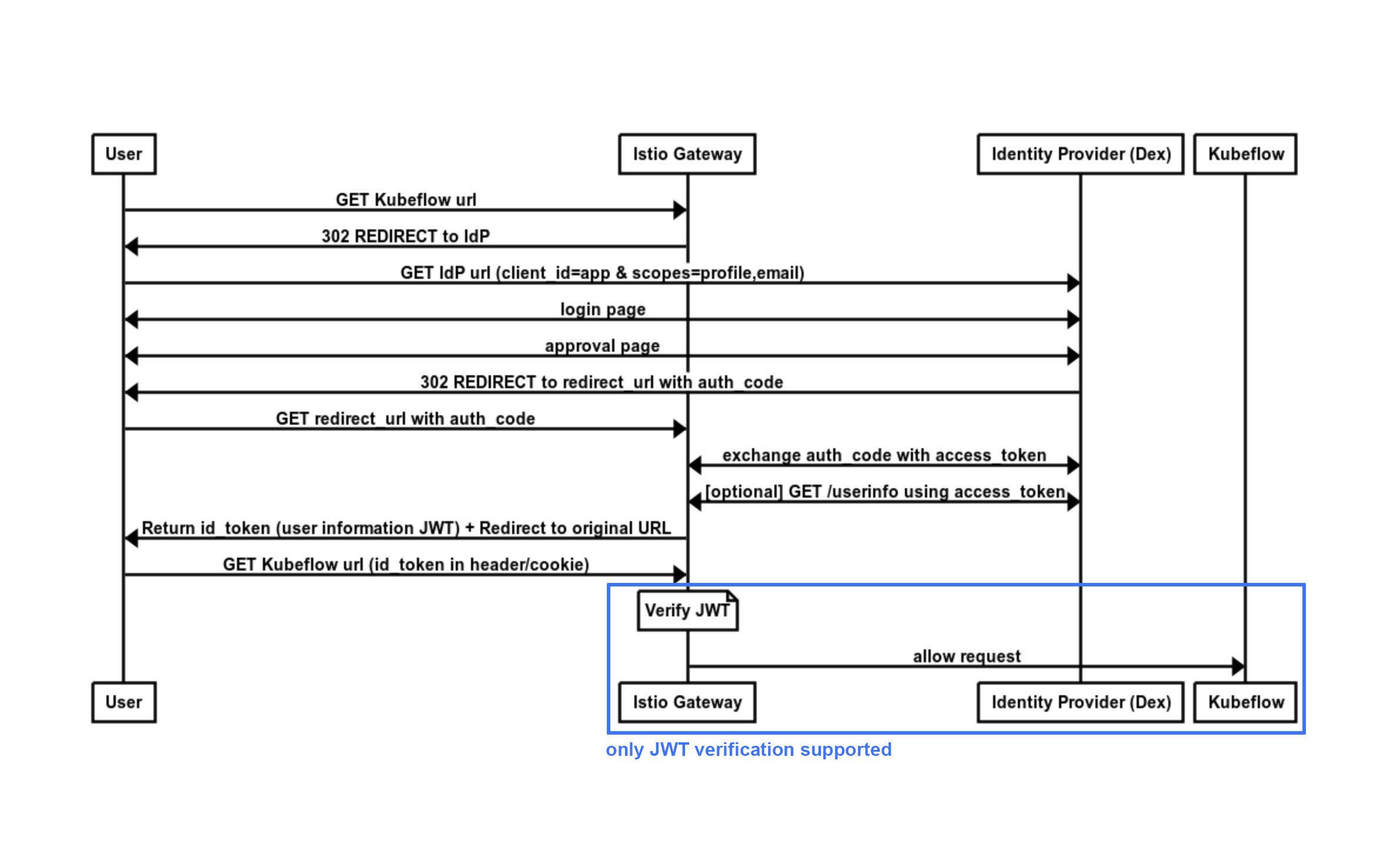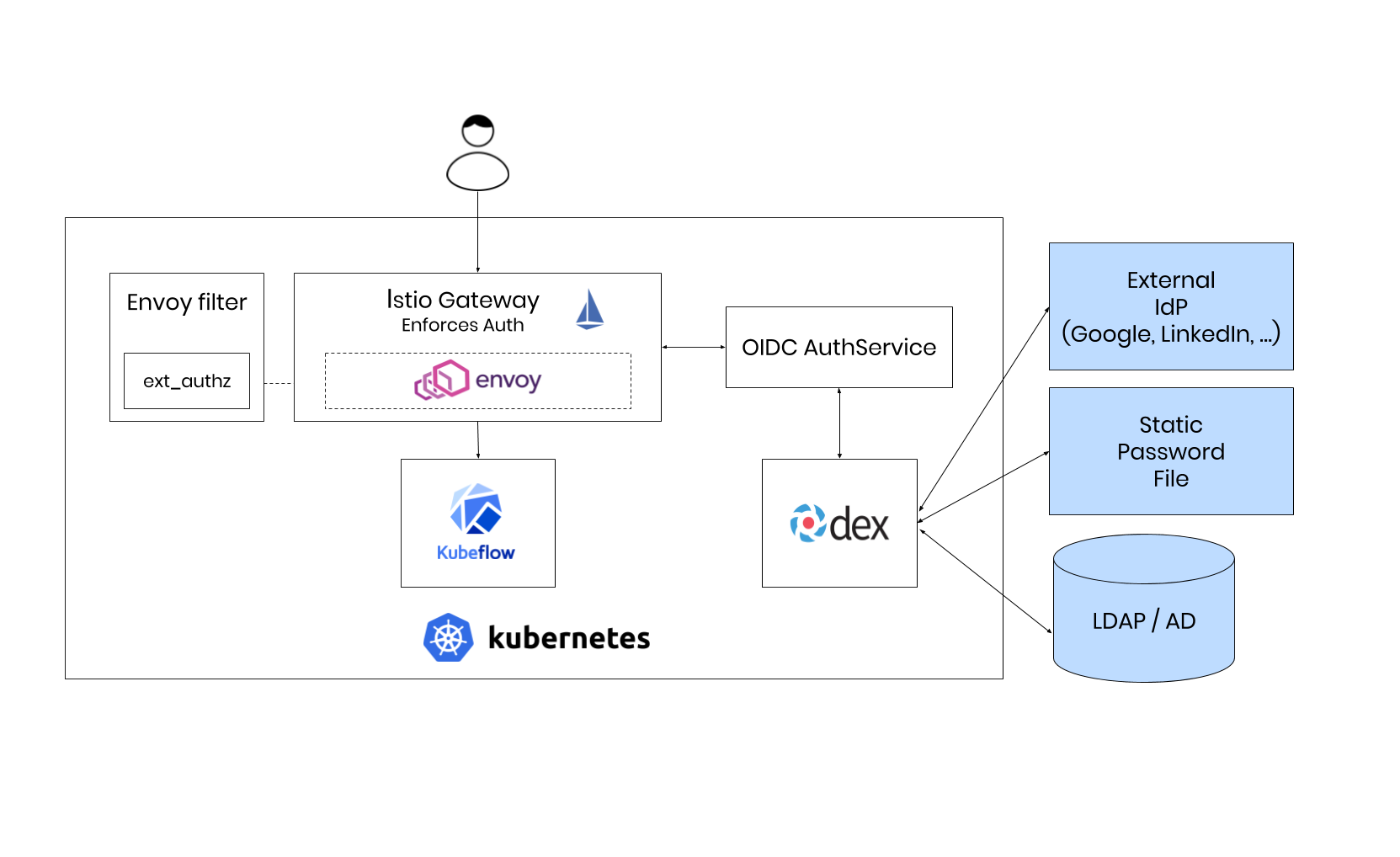https://journal.arrikto.com/kubeflow-authentication-with-istio-dex-5eafdfac4782
Multi-tenancy is a central feature of Kubeflow 0.6 and providing a flexible authentication scheme is important for enterprise use-cases.
In this article, we will explore how we leveraged the power of Istio and open-source components to create a flexible, robust and clean authentication solution.
This solution is especially powerful because:
- It leverages Istio features and doesn’t add extra components.
- It can work on any Kubernetes cluster and doesn’t rely on having access to the API-Server.
- It is a general solution and can be applied to other projects besides Kubeflow.
With that said, let’s dive into the solution.
The end-goal
We will focus on using Istio to perform end-user authentication, meaning that our apps won’t contain any authentication logic!
Authentication, for user access to an application, will be done at the Istio Gateway: the one point where all traffic enters the cluster.
Authentication is a major area that developers may choose to leave up to Istio. The idea is simple:
- Incoming traffic includes a JSON Web Token (JWT) for authentication.
- The JWT is verified by the Istio Gateway.
- Apps inside the cluster trust the JWT because it has been verified by the Gateway.


This way, our apps contain no authentication logic at all!
Unfortunately, it’s not that simple.
Authentication in Istio
At first glance, Istio seems to support end-user authentication.
However, notice how Istio can only perform the last part, token verification (i.e. verify the JWT and allow the request).
The question is: how are we going to get that token in the first place?
Enter OpenID Connect (OIDC): a way to authenticate a user using a standardized OAuth2 flow.
The OIDC Flow
Because a picture is worth a thousand words, let’s take a look at what an OIDC flow looks like.


Notice how Istio can only perform the last part, token verification.
Because of this, we need a new entity that will act as the OIDC client and execute the flow.
Envoy — The power behind Istio
As many of you will already know, Istio is mainly in the control path.
Under the hood, the data is handled by Envoy, a very efficient and versatile proxy.
Why is this relevant?
Istio lets you configure its underlying Envoy Proxies using an EnvoyFilter object.
The EnvoyFilter object enables us to insert Envoy Filters in the data path of certain proxies.
In our case, we want to configure the Envoy Proxy of the Istio Gateway.
But what filter should we use?
The ext_authz HTTP Filter
The ext_authz HTTP filter is an extremely powerful and versatile capability of Envoy.
Its function is very simple:
Every request is forwarded to an Authorization Service (AuthService). Depending on the answer, that response can be:
- Accepted
- Rejected
- Redirected


The OIDC AuthService
We just need to implement the component that will handle those actions.
Luckily, there is an open-source tool that we can reuse for this exact purpose, the ambassador-auth-oidc project.
Putting it all Together
Our Istio Gateway can now act as an OIDC client and execute the whole flow to authenticate a user.
Let’s test it out using Dex, a popular OIDC provider.
Dex supports many authentication backends, including static users, LDAP and external Identity Providers, so you can have the power of choice.
The final architecture is the following:


Demo
All of the aforementioned functionality is available for Kubeflow v0.6.
At this time, the way to install this reference architecture is to use the standard kfctl tool, and define platform “existing_arrikto”, to install on an existing Kubernetes Cluster.
Kubeflow on Kubernetes
Instructions for installing Kubeflow on your existing Kubernetes cluster Follow these instructions if you want to…
www.kubeflow.org
Simply follow the instructions from the Kubeflow docs and you should have a Kubernetes Cluster with Kubeflow, Istio and Dex for Authentication.


Final Thoughts
In this article, we unlocked the powerful feature of the Envoy Proxy and used Istio along with Dex and the OIDC AuthService to form a complete Authentication architecture. This enables applications to offload all authentication logic to Istio and focus on the business logic, which works great for Kubeflow’s microservice-oriented architecture.
The ext_authz feature of Envoy is not very well-known within the Istio userbase, however it is an incredibly powerful feature that enables us to integrate with virtually any authentication scheme.